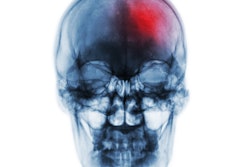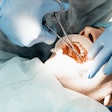
Knowledge and attitudes toward infective endocarditis (IE) differ among dental and medical students based on their educational progression, according to research published in the Journal of Dental Education.
Since both groups typically do not receive additional training on antimicrobial management and IE prophylaxis, there is a need for improvement in the education system, the authors wrote.
"An effective treatment plan requires good communication between dentists, patients, and medical physicians, and at the same time, the dentists and medical physicians should have a similar, good level of knowledge about antibiotic prophylaxis,” wrote the authors, led by Kübra Karaçam of the department of periodontology of Afyonkarahisar Health Sciences University in Turkey (J Dent Educ, April 5, 2024).
IE is rare but carries a grave prognosis. Given the significant treatment expenses and risks of morbidity and mortality, it highlights the necessity for dentists to be well informed about preventive measures pertaining to this condition, they wrote.
Despite advances in prophylaxis guidelines, the pathogens causing IE have evolved, leading to changes in predominant pathogens. As a result, healthcare professionals should regularly update their education syllabi by closely following current guidelines, they wrote.
To compare the knowledge level of IE among fourth- and fifth-year dentistry students in clinical residency and fifth- and sixth-year medical students, 332 participants were selected to complete a 42-item questionnaire. The questionnaire assessed their familiarity with the antibiotics prescribed for IE prophylaxis in both medical settings and dental procedures.
The students answered fewer than two-thirds of the questions correctly, according to the researchers. Furthermore, statistical analyses showed a good level of knowledge in 55% of the dental students and 43.5% of the medical students. Both groups had lower accuracy in recognizing medical and dental conditions that do not require antibiotic prophylaxis compared to those that do, they wrote.
The study had limitations, including that the sample of participants was restricted to medical and dental students from only one region. A nationwide study would offer more comprehensive insights, they added.
"These data demonstrate the need for more importance to be given to education about IE prophylaxis in dentistry and medical faculties," they concluded.



















